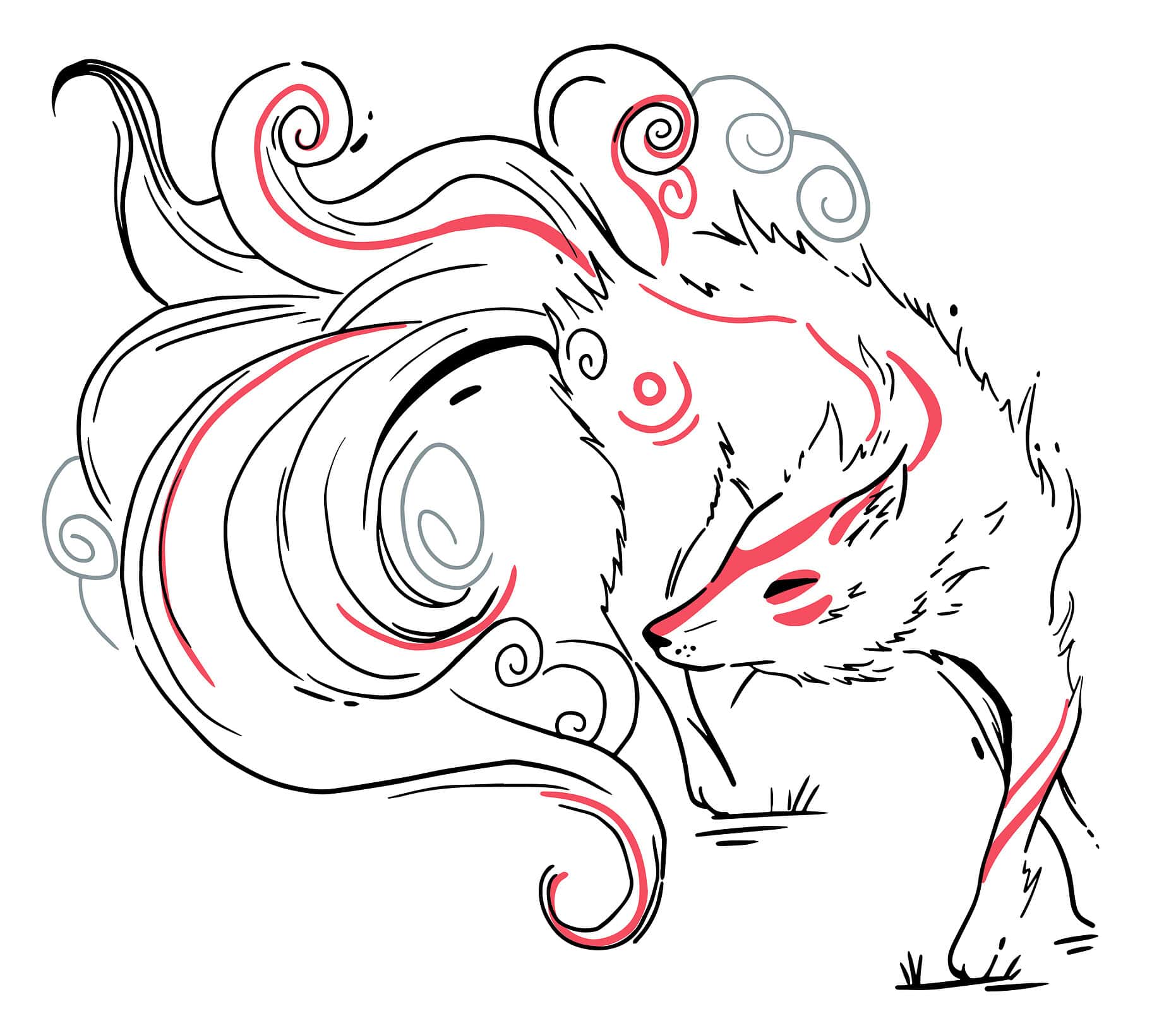
The most powerful kitsune possess nine-tails, indicating they have been alive for nearly 900 years.
©Hanna Udod/iStock via Getty Images
Foxes are popular animals in fables and fairy tales around the world. The most popular stories involve foxes acting as cunning and mischievous animals, playing tricks on the protagonist and impeding progress.
Real-life foxes are just as tricky and cunning as their fictional counterparts. They use their keen intellect to hunt and chase prey, as well as adapt quickly to environmental changes to survive.
One of the most iconic and powerful versions of fictional foxes is kitsune. These Japanese foxes have supernatural powers that could rival powerful gods and trick emperors. Kitsune imagery is prominent across Japan. This article shares everything you need to know about these mischievous mammals.
What are Kitsune?
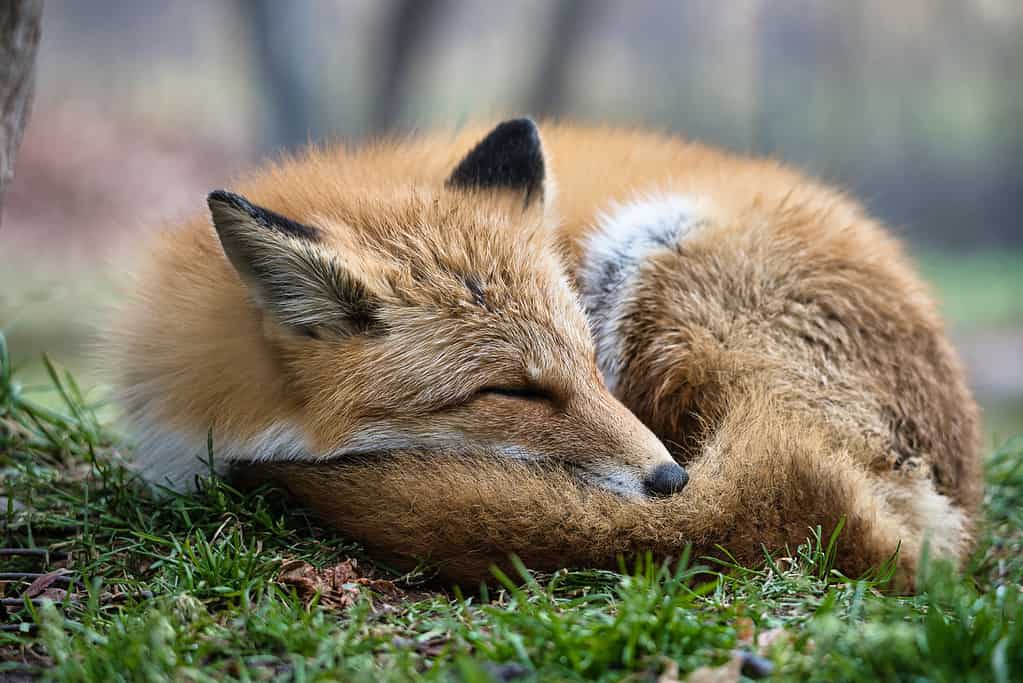
Ezo foxes have orange-red color and white markings, but with thick hair for cold weather.
©TokioMarineLife/iStock via Getty Images
Kitsune is the Japanese word for fox. There are two types of foxes living in Japan: the Hokkaido (Ezo) red fox, and the traditional Japanese red fox.
Hokkaido red foxes are commonly found in Hokkaido and the surrounding islands of Sakhalin and Kuril. Alternatively, the Japanese red fox lives in Honshu, Shikoku, and Kyushu.
These red foxes have rich, bright fur, with white-tailed tips. On average, they live four years in the wild but can survive up to 14 or 15 years in captivity. The Hokkaido red fox is slightly larger than the Japanese red fox, but both have the same hunting styles and coloration.
Red foxes are omnivores, mostly eating rabbits, small rodents, insects, birds, and bird eggs, in addition to fruits and nuts to balance their diet.
Cultural Importance of Kitsune
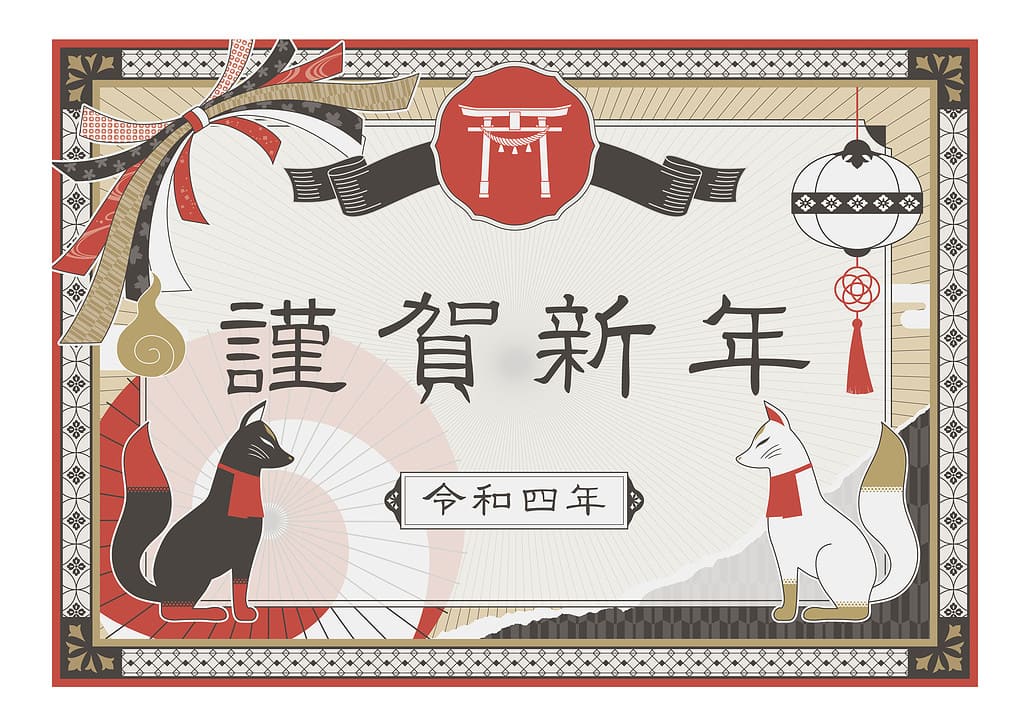
Kitsune imagery is popular on cards due to its cute silhouettes, unique colors, and cultural significance.
©marumaru/iStock via Getty Images
Japan’s largest religion is Shintoism, which teaches that everything has a spirit. Every animal and object must be treated with respect and care, otherwise, their spirit may attract malicious spirits to corrupt their home.
Foxes are sacred animals in Shintoism because they are messengers of Inari, the goddess of fertility and rice. Rice is an important food in Japanese culture because it is easy to grow and was previously used as a form of currency. Wealthy families ate white rice, displaying their ability to eat pure and clean foods, while impoverished families ate brown rice. Japanese farmers prayed to Inari for a healthy harvest to feed their families during the winter.
Whenever farmers saw a fox in their rice fields, they believed it was Inari directly blessing their harvest. Eventually, foxes became synonymous with good fortune and wealth.
Types of Kitsune
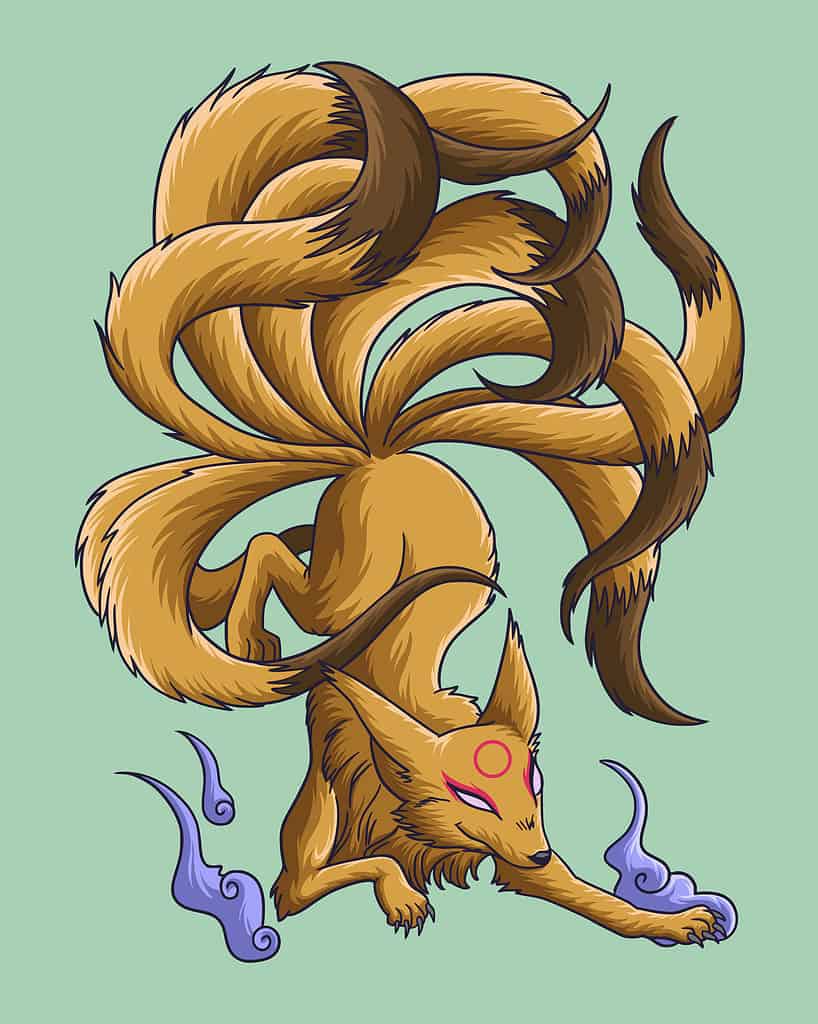
These foxes can conjure small gusts of wind or create illusions that completely alter one’s perception.
©intellegent Design/iStock via Getty Images
Because kitsune are wild animals, they have a stronger connection to the spiritual energy of nature than humans. Kitsune’s abilities resonate with the 13 elements of Shintoism:
- Wind
- Fire
- Earth
- River
- Ocean
- Forest
- Mountain
- Thunder
- Sound
- Spirit
- Time
- Darkness
- Celestial
Depending on the kitsune’s elemental magic, they can influence different parts of the world as they age.
Kitsune in Mythology
In folklore, kitsune are powerful beings called yokai (spirits) and are masters of deception. A fox’s natural cunning and intellect are embellished, depicting kitsune as master manipulators capable of tricking people out of money, food, or their homes.
Kitsune Magic
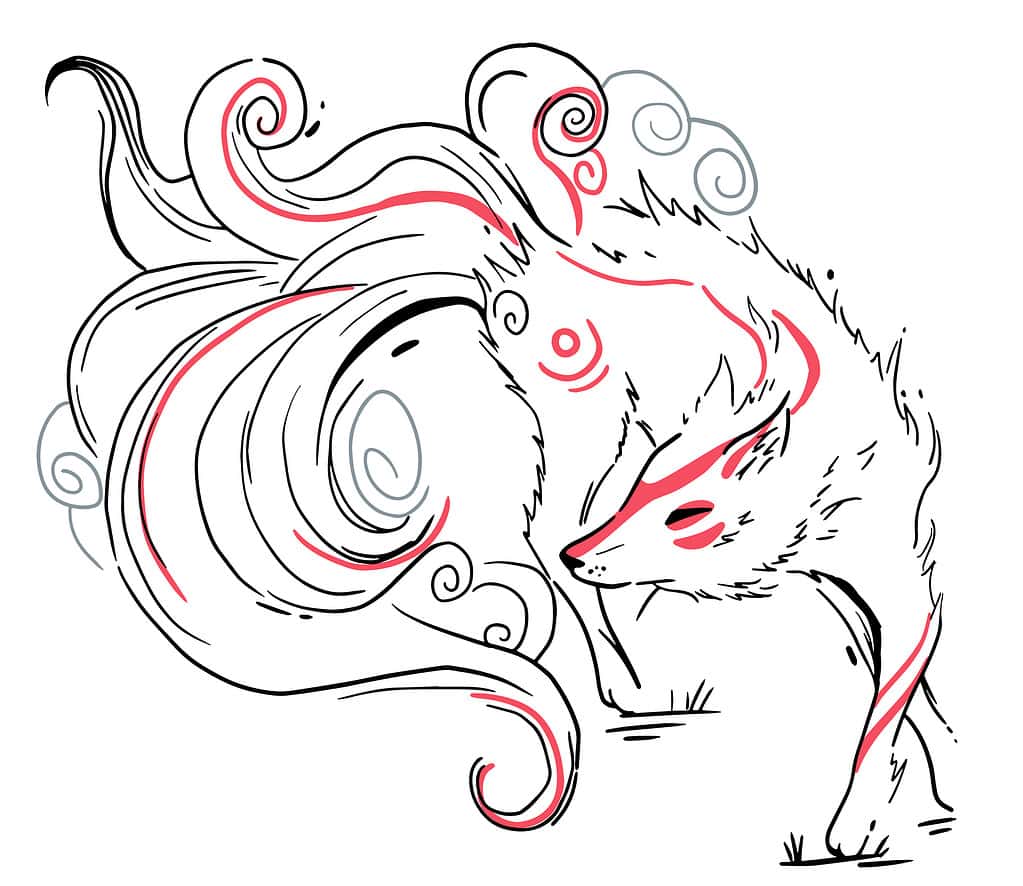
Line art of kitsune are fun drawings for children and an artistic method of expression for artists.
©Hanna Udod/iStock via Getty Images
A kitsune’s main weapon and magical ability is shapeshifting. They can look like anything they wish. Most stories depict them turning into women, but other stories tell of them becoming men or children.
Aside from their natural elemental attribute, kitsune can live for hundreds of years. Famous depictions of kitsune involve foxes with multiple tails. The number of tails a kitsune has directly correlates with their age and strength of their magical prowess. Kitsune gains a new tail every 100 years, with the most powerful kitsune having nine tails.
The only way to see through a kitsune’s illusions and shapeshifting magic is to look for their tails. Foxes must hide their tails while transformed, which is why they choose to hide as women with long dresses. Additionally, kitsune are naturally afraid of dogs, their rivals in nature.
Romantic Shapeshifting
Many legends tell of kitsune transforming into a beautiful woman and tricking a wealthy nobleman into purchasing her as one of his wives. The man is so enamored by her good looks, that he offers her everything he can afford.
Each fable has different endings. Sometimes the fox is discovered and forced to flee. Other times the kitsune robs the nobleman, leaving him with nothing. On rare occasions, the kitsune completely tricks the man into believing he obtained a loving wife, only to find himself in a shed surrounded by leaves.
Public Humiliation
Kitsune are not always playing tricks on the innocent for their amusement. Many kitsune use their shapeshifting and deceptive powers to punish proud samurai, wicked priests, or greedy merchants who harm the innocent or take advantage of others.
The kitsune use their magic to ensnare the bad actors in illusions, forcing them to admit their evil deeds or humiliating them in public to dishonor their name.
If someone helps a kitsune, the fox may use its magic to benefit their benefactor as thanks.
Foxfire Lights

The foxfire waterlily is named after the fox’s ability to create beautiful lights in darkness.
©photofxs68/iStock via Getty Images
Foxfires are strange lights that float in the sky during foggy nights. People originally thought these lights were illusional fires made by kitsune to lure people into the woods. Other times, it was believed kitsune emitted these lights to help people out of the woods and back to civilization.
A fungus that imitates a fiery glow was named foxfire, after the kitsune’s abilities.
Kitsune in Modern-Day
In modern day, kitsune stories are told as bedtime stories to children as a way to share Shintoism with the next generation. Foxes are considered important and sacred animals that should be protected, despite some nuisance behaviors like digging in garbage cans.
Popular Culture

Books, anime, and manga often use humanoid kitsune as characters to combine nature and humanity.
©shima/iStock via Getty Images
Television shows, anime, manga, and advertisements use kitsune iconography because it is both fascinating and cute. Their magical powers, multiple tails, and quick thinking make these foxes popular characters or inspiration for fictional stories.
- Manga and anime Yu Yu Hakusho by Yoshihiro Togashi used a kitsune as the inspiration for Kurama, one of the main characters who has the powers of a demon fox.
- Manga and anime Naruto and Naruto Shippuden by Masahi Kishimoto infused a kaiju-sized nine-tailed fox inside the main character, Naruto Uzumaki.
- Vulpix and Ninetails from the Pokemon franchise are direct iterations of a young fox evolving into a powerful nine-tailed fox.
- Tails from the Sonic franchise is a young two-tailed fox, inspired by kitsune. His high intelligence is also a clear reference to a kitsune who has lived for nearly 200 years and is wiser than those around him.
Masks

Fox masks are common in performing arts shows to honor Shintoism and its many stories.
©Elen11/iStock via Getty Images
Kitsune masks are incredibly popular throughout Japan. The masks are often white with fox features, with some having the symbol of an element on the forehead.
Different masks are worn for these different occasions:
- Religious ceremonies
- Festivals
- Warding off evil spirits
- Giving thanks to Inari
- Leisure and playing
Additionally, people find foxes adorable, and wearing a fox mask is simply fun. Foxes have a natural charm. Some people even wonder if they can own them as pets.
Festivals

White rice is the most common side dish in Japan because it is easy to grow and has cultural significance.
©Wako Megumi/iStock via Getty Images
Fox festivals are widely popular in Japan to give thanks for rice harvests, crops, good fortune, and other traditional beliefs.
- Kitsune no Yomatsuri is an annual festival that started in 1989. It honors a fox folktale that has been handed down through generations.
- Kitsune-bi Matsuri, or the Fox Wedding Parade Festival, is a large ceremony recalling the tale of foxes making it rain so they can have a wedding ceremony. The festival began in the 1950s and is an annual event. People dress in fox masks and stunning outfits and parade 1.5 km along the old Sanyo Highway to the Hanaoka District.
Fox imagery is popular around the world because foxes are curious animals that draw people’s attention. Kitsune are the epitome of fox lore because they take the animal’s natural intelligence and cunning and add magical prowess. This combination leads to their ability to warp reality through illusions.
Thank you for reading! Have some feedback for us? Contact the AZ Animals editorial team.

